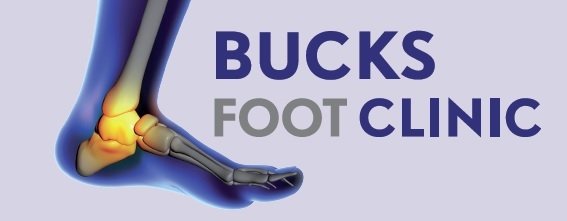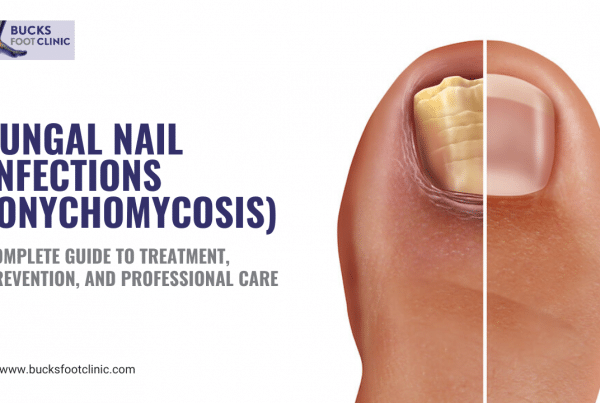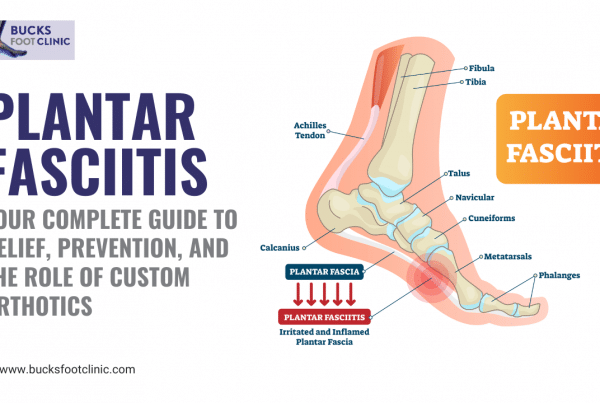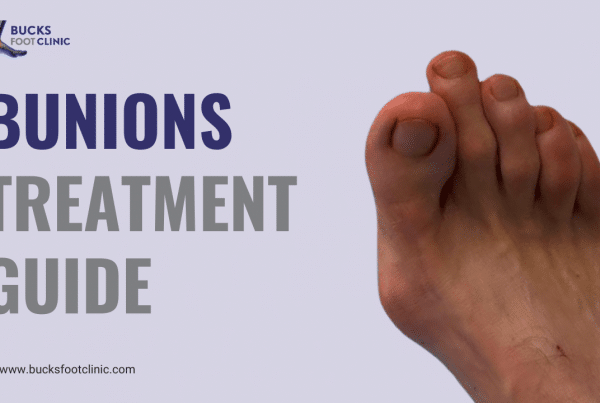
Children’s Foot Health: Warning Signs Parents Should Never Ignore
As parents, we carefully monitor our children’s development—their first words, initial steps, academic progress—yet foot health often goes overlooked until problems become obvious. Children’s feet are remarkably different from adult feet, containing more cartilage than bone and continuing to develop until late teenage years. Understanding kids foot problems symptoms and recognising when to see a podiatrist for child concerns can prevent minor issues from becoming lifelong complications. This comprehensive guide helps parents identify crucial warning signs, understand normal versus abnormal foot development, and make informed decisions about their children’s podiatric health.
Understanding Children’s Foot Development
Children’s feet undergo dramatic changes from birth through adolescence, with critical developmental windows that influence lifelong foot health. At birth, a baby’s foot contains only 22 partially developed bones (compared to 26 in adult feet), with most structures being cartilaginous. This soft, flexible nature makes young feet particularly vulnerable to deformation from ill-fitting shoes, abnormal pressures, or untreated developmental issues.
The arches don’t fully develop until around age six, which explains why toddlers appear flat-footed. This natural progression means that what seems concerning in a two-year-old might be entirely normal, whilst the same presentation in an eight-year-old could indicate intervention is needed. Growth plates in children’s feet remain open until mid-to-late teens, making them susceptible to specific injuries that don’t affect adults.
During growth spurts, children’s feet can grow up to 12mm per year, with the most rapid growth occurring before age five and during puberty. This rapid change means foot problems can develop quickly, and shoes that fitted perfectly three months ago might now be causing damage. Regular monitoring becomes essential, as children often don’t complain about foot discomfort, either because they assume it’s normal or can’t articulate what they’re experiencing.
The developing nervous system in young children means they might not accurately report pain location or intensity. What they describe as “tired legs” might actually indicate foot problems, whilst genuine foot pain might be expressed as reluctance to participate in activities rather than specific complaints.
Critical Warning Signs That Require Immediate Attention
Persistent Toe Walking Beyond Age Three
Whilst toe walking is common in toddlers learning to walk, persistence beyond age three warrants professional assessment. This pattern might indicate shortened Achilles tendons, neurological conditions, or sensory processing differences. Some children toe walk intermittently when excited or concentrating, which differs from constant toe walking that prevents normal heel-to-toe gait.
Watch for associated signs: difficulty fitting into shoes, calf muscle tightness, frequent tripping, or inability to stand flat-footed even when reminded. Early intervention through stretching exercises, physical therapy, or in some cases, serial casting, can prevent long-term complications including permanent tendon shortening and altered biomechanics affecting the entire skeletal system.
Sudden Limping or Refusing to Bear Weight
Any unexplained limping lasting more than 24 hours requires professional evaluation. Children might limp due to various causes—from simple issues like plantar warts or ingrown toenails to more serious conditions like fractures, infections, or juvenile arthritis. The absence of visible injury doesn’t mean nothing’s wrong; stress fractures and growth plate injuries often show no external signs.
Pay particular attention to limping accompanied by fever, swelling, or warmth, which might indicate infection or inflammatory conditions. Morning stiffness that improves with activity could suggest juvenile arthritis, whilst limping that worsens throughout the day might indicate mechanical problems or stress injuries.
Asymmetrical Wear Patterns on Shoes
Examining your child’s shoe wear patterns provides valuable insights into their gait and potential problems. Normal wear appears relatively even across the heel and ball of foot. Excessive wear on inner edges suggests overpronation, whilst outer edge wear indicates supination. One shoe wearing differently from the other might reveal leg length discrepancies or asymmetrical gait patterns.
Look beyond just the sole—check if shoes consistently break down on one side, if the upper leather stretches abnormally, or if heel counters collapse inward or outward. These patterns often appear before symptoms develop, offering opportunity for preventive intervention.
Complaints of Night Pain or “Growing Pains”
Whilst growing pains are real phenomena affecting 25-40% of children, not all night-time leg pain should be dismissed as growth-related. True growing pains typically affect both legs, occur intermittently, and resolve with massage or mild pain relief. Consistent pain in one location, pain that wakes children from sleep, or pain accompanied by swelling requires investigation.
Conditions like Sever’s disease (heel growth plate inflammation), stress fractures, or even bone tumours can masquerade as growing pains. The location, timing, and nature of pain provide diagnostic clues that professional assessment can properly interpret.
Visible Deformities or Changes in Foot Shape
Any noticeable change in foot shape warrants evaluation. This includes bunions (even in children), hammertoes, excessively high or flat arches, or feet that appear to turn significantly inward or outward. Whilst some variations are normal, others indicate conditions requiring treatment to prevent progression and future complications.
Common Kids Foot Problems Symptoms Parents Often Miss
Subtle Changes in Activity Levels
Children naturally adapt to discomfort by modifying activities rather than complaining. A child who previously loved running but now prefers sedentary activities might be experiencing foot pain. Watch for subtle avoidance behaviours: choosing to sit out during PE, requesting to be carried more often, or developing sudden disinterest in previously enjoyed sports.
These behavioural changes often precede visible symptoms or direct complaints. Children might unconsciously alter their gait to avoid pain, leading to compensatory problems elsewhere. Early recognition allows intervention before secondary issues develop in knees, hips, or back.
Frequent Tripping or Clumsiness
Whilst some clumsiness is normal during growth spurts, excessive tripping might indicate foot problems. In-toeing (pigeon toes) or out-toeing can cause children to catch their feet on each other or the ground. Muscle weakness, tight tendons, or neurological issues affecting foot control might manifest as increased falls.
Document the frequency and circumstances of falls. Tripping whilst running might be normal, but frequent falls during walking, especially on flat surfaces, suggests underlying issues. Note whether fatigue increases clumsiness, which might indicate muscle weakness or endurance problems.
Skin and Nail Changes
Children’s foot skin should be smooth and uniform in colour. Persistent redness, especially over bony prominences, indicates pressure from ill-fitting shoes. Calluses, whilst common in adults, are abnormal in children and suggest excessive friction or pressure. Hard skin patches on young feet always warrant investigation.
Ingrown toenails, whilst seemingly minor, can significantly impact children’s comfort and activity levels. Recurring ingrown nails might indicate improper nail trimming, tight shoes, or inherited nail shape requiring professional management. Fungal infections, though less common in children than adults, need prompt treatment to prevent spread.
Behavioural Indicators
Children express discomfort through behaviour changes that parents might not immediately connect to foot problems. Irritability after walking, reluctance to wear certain shoes, or consistently removing shoes might indicate discomfort. Some children develop compensatory behaviours like walking on furniture edges or preferring to be barefoot constantly.
Sleep disturbances can relate to foot discomfort that worsens when lying down. Restless leg symptoms in children sometimes stem from foot problems rather than true restless leg syndrome. Morning grumpiness might reflect overnight foot cramping or morning stiffness from inflammatory conditions.
How to Prevent Foot Problems in Children
- Implement Regular Foot Checks
Establish monthly foot examinations as routine as dental care. Check for size changes, skin abnormalities, nail problems, and structural changes. Make it fun for younger children by playing “foot detective” or incorporating checks into bath time. Document findings with photos to track changes over time.
- Ensure Proper Footwear Fit
Measure both feet every three months for young children, every six months for school-age children. Shop for shoes in the afternoon when feet are slightly swollen. Ensure thumb-width space between longest toe and shoe end, adequate width without pressure points, and firm heel counters that don’t slip. Avoid hand-me-down shoes, as wear patterns from one child can negatively affect another’s gait.
- Encourage Barefoot Time
Allow supervised barefoot play on safe surfaces to strengthen foot muscles and promote natural development. Grass, sand, and carpet provide sensory input crucial for developing balance and coordination. Barefoot time helps develop intrinsic foot muscles that supportive shoes might otherwise weaken.
- Promote Varied Physical Activities
Different activities challenge feet in various ways, promoting balanced development. Swimming strengthens without impact, whilst running builds bone density. Dance improves flexibility and coordination, and climbing develops grip strength and balance. Avoid early sports specialisation that repeatedly stresses the same structures.
- Monitor Growth Spurts
During rapid growth phases, increase vigilance for problems. Growth spurts can temporarily alter biomechanics, making children more injury-prone. Ensure shoes are checked more frequently during these periods, and watch for new complaints or changes in activity patterns.
- Establish Healthy Foot Habits Early
Teach proper nail trimming techniques—straight across, not too short. Make foot hygiene part of daily routines, including thorough drying between toes. Educate children about telling adults when something hurts, emphasising that foot pain isn’t normal or something to “tough out.”
Why Seeing a Podiatrist Is Better Than Home Remedies
Specialised Paediatric Knowledge
Children’s feet aren’t simply smaller versions of adult feet—they require specialised understanding of developmental anatomy, growth patterns, and age-specific conditions. The HCPC-registered podiatrists at Bucks Foot Clinic, all holding B.Sc. Podiatric Medicine degrees, possess comprehensive training in paediatric foot development and disorders.
Their expertise encompasses understanding which concerns are developmental variations that will self-resolve versus conditions requiring intervention. This knowledge prevents both unnecessary treatment of normal variants and missed opportunities to address genuine problems during critical developmental windows.
Accurate Developmental Assessment
Professional podiatrists use age-specific assessment tools and normative data to evaluate whether a child’s foot development falls within normal ranges. They understand that flat feet in a four-year-old might be normal but concerning in a ten-year-old. This developmental perspective ensures appropriate, timely intervention when needed whilst avoiding unnecessary treatment.
The qualified podiatrists at Bucks Foot Clinic perform comprehensive biomechanical assessments adapted for children’s developmental stages. They can identify subtle abnormalities that might seem minor but could lead to significant problems if left unaddressed during crucial growth periods.
Child-Friendly Treatment Approaches
Professional podiatrists understand how to examine and treat children effectively, making potentially scary medical visits comfortable and even fun. They use age-appropriate explanations, involve children in their care, and employ treatment methods designed for developing feet. This expertise ensures better compliance and outcomes than attempting home treatments that children might resist.
Access to Paediatric-Specific Treatments
Children’s treatments differ significantly from adult protocols. The bespoke orthotics created at Bucks Foot Clinic for children consider ongoing growth, using materials and designs that accommodate development whilst providing necessary support. These devices require regular adjustment as feet grow, something impossible with shop-bought inserts.
Professional podiatrists can also coordinate with other healthcare providers—paediatricians, physiotherapists, orthopaedic specialists—ensuring comprehensive care for complex conditions. They recognise when issues extend beyond isolated foot problems, facilitating appropriate referrals.
Prevention of Long-term Complications
Early professional intervention can prevent lifelong problems. Conditions like severe flat feet, untreated toe walking, or persistent in-toeing can lead to knee pain, hip problems, and back issues in adulthood. Professional podiatrists identify and address these issues during the window when correction is most effective and least invasive.
How to Fix Common Childhood Foot Problems
- Addressing Flat Feet
For children over six with symptomatic flat feet causing pain or limiting activity, begin with supportive footwear featuring firm heel counters and arch support. Implement strengthening exercises like toe curls, marble pickups, and calf raises. However, professional assessment determines whether these measures suffice or if custom orthotics are necessary to prevent progression and associated problems.
- Managing In-toeing (Pigeon Toes)
Most in-toeing resolves naturally by age eight. Meanwhile, avoid W-sitting position, encourage cross-legged sitting, and ensure shoes aren’t worn on wrong feet. If in-toeing persists beyond age eight or causes frequent tripping, professional evaluation can determine whether intervention is needed. Some cases require specific exercises, orthotics, or rarely, surgical correction.
- Treating Sever’s Disease
This common cause of heel pain in active children aged 8-14 requires activity modification, not complete rest. Ice application after activities, heel cups for cushioning, and calf stretching help manage symptoms. Professional assessment ensures accurate diagnosis, as other conditions can mimic Sever’s disease. Podiatrists can provide custom orthotics that reduce stress on the growth plate whilst maintaining activity levels.
- Correcting Toe Walking
If identified early, consistent reminders to walk heel-to-toe, combined with Achilles stretching exercises, might suffice. Use visual cues like heel-first stickers on shoes. However, persistent toe walking requires professional intervention. Treatment might include physical therapy, serial casting, or in complex cases, surgical lengthening of the Achilles tendon.
- Resolving Ingrown Toenails
For mild cases, soak feet in warm water, gently lift nail edges with cotton, and ensure proper trimming technique. Never dig down nail sides or cut V-shapes in nails—these outdated methods worsen problems. If redness, swelling, or discharge develops, seek professional care immediately. Podiatrists can perform minor procedures providing permanent resolution for recurring ingrown nails.
- Managing Verrucae (Plantar Warts)
Whilst many verrucae resolve spontaneously within two years, painful or spreading warts need treatment. Over-the-counter treatments often prove ineffective and can damage surrounding skin. Professional podiatrists offer various treatments including cryotherapy, needling, or prescription medications, selecting approaches based on the child’s age, wart characteristics, and pain levels.
When to See a Podiatrist for Child Concerns
Immediate Assessment Needed
Certain symptoms demand prompt professional evaluation: sudden inability to walk, severe pain, signs of infection (fever, red streaks, warmth), obvious deformity following injury, or wounds that won’t heal. These situations might indicate serious conditions requiring immediate intervention.
Scheduled Assessment Recommended
Book routine assessment for: persistent complaints lasting over two weeks, abnormal walking patterns after age three, family history of foot problems, participation in intensive sports training, or any parental concerns about foot development. Early assessment often reveals minor issues easily corrected before becoming significant problems.
Regular Monitoring Situations
Some children benefit from regular podiatric monitoring: those with developmental delays, neurological conditions, diabetes, or previous foot problems. Children in competitive sports or dance should have periodic assessments to prevent overuse injuries and ensure healthy development despite intensive training.
The Long-term Impact of Childhood Foot Health
Foot problems during childhood can establish movement patterns that persist into adulthood, affecting entire body biomechanics. A child who develops compensatory gait patterns to avoid foot pain might experience knee, hip, or back problems decades later. Investment in childhood foot health pays dividends throughout life.
Beyond physical health, foot problems can impact children’s social development and self-esteem. Children who can’t keep up with peers during play, who experience pain during sports, or who feel self-conscious about their feet might withdraw from physical activities, affecting fitness, social connections, and confidence.
Conclusion: Prioritising Your Child’s Foot Health
Children’s foot health deserves the same attention given to other aspects of their development. Understanding kids foot problems symptoms empowers parents to identify issues early when treatment is most effective. Whilst many childhood foot concerns resolve naturally, others require professional intervention to prevent lifelong complications.
Don’t dismiss foot complaints as “growing pains” or assume children will “grow out of” problems. Trust your parental instincts—if something seems wrong, seek professional assessment. The developing nature of children’s feet means that early intervention often achieves results impossible once growth is complete.
Expert Paediatric Foot Care at Bucks Foot Clinic
Ensure your child’s feet develop properly with professional assessment from the HCPC-registered podiatrists at Bucks Foot Clinic. All clinicians hold B.Sc. Podiatric Medicine degrees and have extensive experience treating children’s foot conditions. Their child-friendly approach makes visits comfortable and even enjoyable for young patients.
From routine developmental checks to treating complex conditions, they provide comprehensive paediatric podiatry services. Their bespoke orthotic service creates custom devices specifically designed for growing feet, adjusted regularly to accommodate development whilst providing necessary support.
Contact Bucks Foot Clinic today:
- Phone: 01494 434366
- Website: www.bucksfootclinic.com
- Address: 18 Woodside Rd, Amersham HP6 6AJ
- Opening Hours: Monday-Friday 9:00-17:00, Saturday 9:00-13:00
Book your child’s foot health assessment today. Early professional evaluation can prevent minor issues from becoming major problems, ensuring your child develops strong, healthy feet to carry them confidently through life. Don’t wait for problems to become obvious—proactive foot care is an investment in your child’s lifelong health and mobility.



